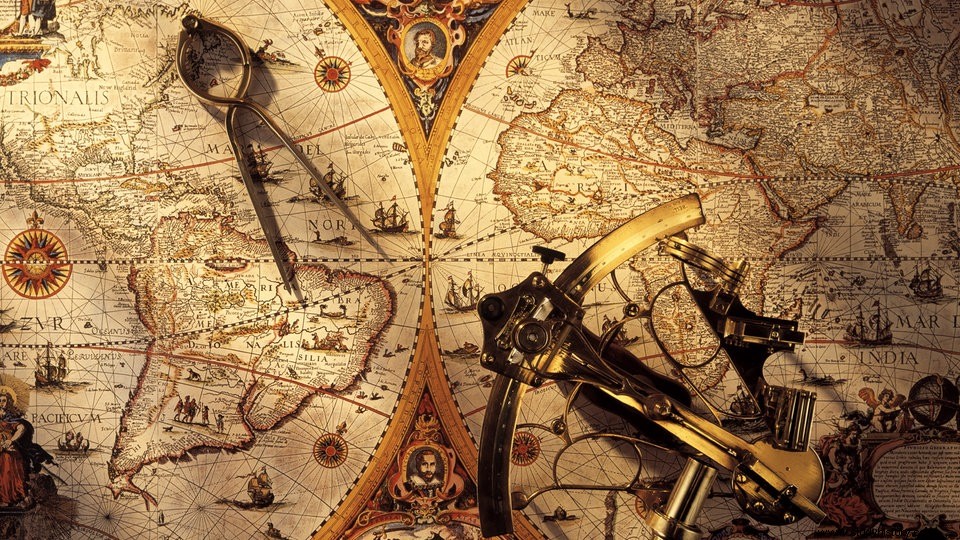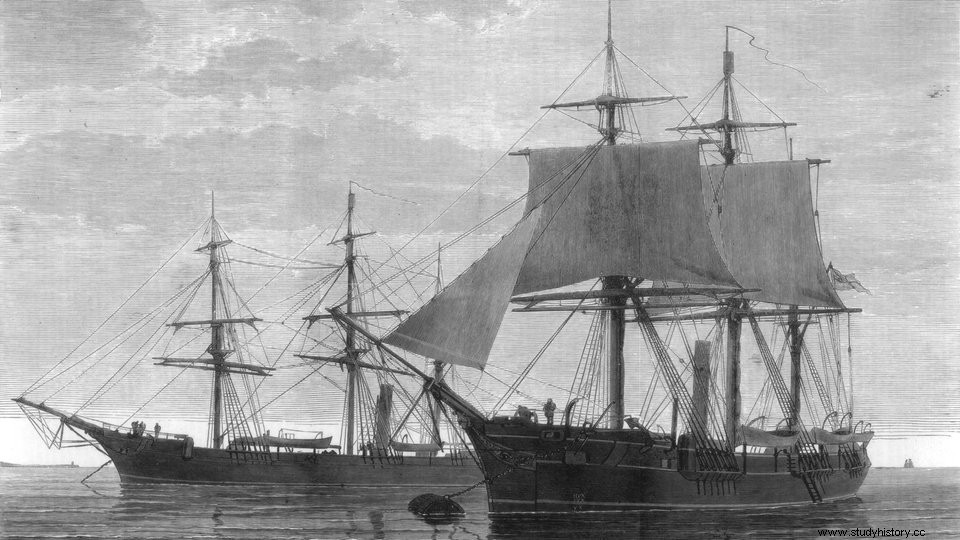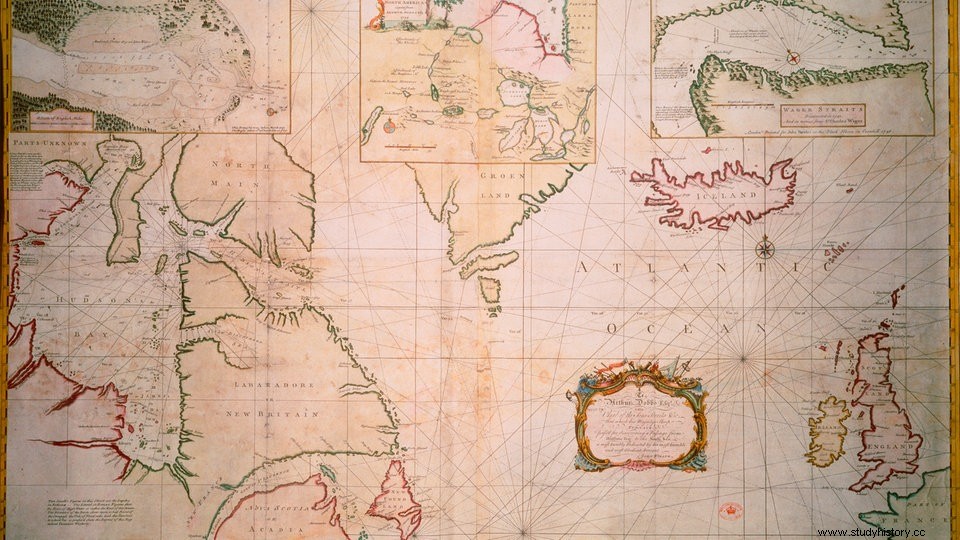Nobody changed the maps of this world as much as the explorer James Cook. On his great voyages he crossed all oceans and mapped the coasts.
A terrible ending
The first commander, Charles Clerke, saw the disaster coming, although the natives, paddling in small canoes, are quite peaceful. Very different from a few days before:the British and Hawaiians had fought bitterly.
The natives get out and offer them peace gifts:fruit, pigs, yams. And human bones. The hand bones are still surrounded by skin.
The first commander of the "Resolution", Cook's last research ship, approaches the canoeists. He inspects the right hand bone. He quickly discovers a scar between his thumb and forefinger. He closes his eyes and nods.
The Hawaiians have brought him the bones of the man he is missing, the bones of the greatest and most famous seafarer of his time - James Cook.
The commander takes the bones on board the ship and lets the anchor drop. Cook's final journey begins. In the evening, his remains are thrown into the sea in seaman's fashion. It is February 20, 1779.
Never did Cook fear that his life would come to such an abrupt end that he would be killed by the natives:he, who, unlike many other explorers, treated them so considerately, who wanted to learn from them instead of exploiting them. He was known for his peacefulness and was a prime example of the fact that advancement is possible in England's strictly stratified society.

Defenseless:James Cook is killed by locals in 1779
From coal chipper to explorer
Because the career of the son of a farm worker, born in 1728, did not start very promisingly. Only at the age of 17 does he get hired on a coal ship. He is hardly educated, but extremely inquisitive. He teaches himself mathematics and navigation. In the evenings, by candlelight, he studies old nautical charts and memorizes constellations.
Cook works his way up, dreams of unknown peoples and lands hidden in the southern continent. Only a large white spot shows up in the southern hemisphere. No one has ventured up to that point. He wants to change that.
Again and again he introduces himself to financiers and applies for expeditions. In 1768 the dream came true:James Cook, 40 years old, was given command of the "Endeavour" and a crew of 90.
Cook is excited and determined. He sails around Cape Horn on the southern tip of Chile and further into the Pacific, which is so vast that all landmasses on earth could be sunk in its depths.
A captain must have excellent navigational skills not to get lost in this blue hell. Cook owns them:he observes astronomical phenomena and meticulously records them.

Young James Cook teaches himself to navigate
As one of very few, he has mastered the lunar distance method, with which he can reliably determine degrees of longitude and then draw accurate maps. They are so accurate that they will not be surpassed until the 20th century.
He steers ever further south, but the land of legends that people dream of in the 18th century is not in sight. A year after leaving, he and his men reach Tahiti, from there they continue to New Zealand and then to the east coast of Australia, where he discovers the Great Barrier Reef, a 2,300 km long coral reef. In months of work he creates maps of it. It returns home through the Indian Ocean in 1771.
Four and a half liters of beer as a daily ration
The following year, James Cook sails south again. There is no continent there. He's sure now. At home in London, the great seafarer was given a grand reception:gun salutes rang out, Cook was given a post in the Navy in London, which, with an annual salary of £230, was tantamount to an honorable retirement.
Cook made do with it, could have taken care of his wife and four small children. But working at his desk bores him, he is restless, has wanderlust, applies for an expedition to the Northwest Passage in February 1776 - and is selected.
James Cook always causes sensations, even on the day he presents his two research ships:no moveable dinghies, no fancy ships.
The now 48-year-old opts for bulky, slow, sparsely equipped coal transporters. But they offer him one major advantage - they have huge storage spaces that Cook can fit vast amounts of supplies:live cattle, salty meat, sauerkraut, alcohol. Plenty.
Four and a half liters of beer per man and an additional half liter of rum for bad weather, these are the daily rations. Cook knows what motivates his men. To do this, the sailors haul masses of replacement material into the ship's hull, scientific instruments and dinghies.

Huge amounts of supplies find space in the "Discovery"'s belly
Slowed down by pack ice
In July 1776, two ships set sail. But the mission is under a bad star. There is always a lull. Cook quickly falls behind his ambitious schedule and comes under pressure.
In this situation he loses what has always characterized the great man:his patience. He wants to go to the Northwest Passage, any way. The passage is the legendary connection between the Atlantic and the Pacific, high in North America. Many seafarers have tried and failed.
Even Cook hardly moves, snow and ice finally force him to turn back. A bitter moment for the successful researcher. Grimly he drives along the coast of North America. No getting through.
Cook orders them to sail south first. Next summer he wants to try again, he writes in a letter to his home country. When he gets there, Cook is long dead.

The passage between the Atlantic and the Pacific
Paradise becomes hell
Then, in January 1779, another ray of hope:the expedition landed in Hawaii. The atmosphere in the team is extremely bad. She is all the more surprised by the reception given by the locals. Priests with fur-covered wands welcome Cook and his crew.
"O-run ne te tuti!" They greet him happily in their native language. They think Cook is a returned god and accompany him every step of the way. Nevertheless, the British leave Hawaii - but are back a week later.
A mast is broken. Cook wants to repair it on land. But this time there is no friendly reception. The natives react coldly, confused by a god whose ship can break. There are quarrels, the natives are stealing from the British more and more often.
In mid-February, they suddenly lack a dinghy. Cook reacts violently:he rows ashore with some sailors. He wants to take hostages until the boat is back. The sailors forgot their sharp weapons in their haste.
Nevertheless, Cook shoots – giving the signal to attack. A carnage begins. The captain stands on the bank and waves - wants to call for reinforcements, because he is struck from behind. Natives rush him, kill him with blows and triumph.
On the "Discovery" a crew gets ready. The men want their captain's body at all costs, no one is safe from their pistols. It's war.
Only in the morning, shortly after sunrise, do the locals hand over the bones. In October 1780, after four and a half years, the expedition arrives back in London harbour. Without their captain.
But it is present in the story of discovery forever. Nobody has filled so many blank spots on the maps, nobody has discovered so much.
Only a few small islands remain for Cook's successors - and the Northwest Passage, on which the great Briton failed. The Norwegian Roald Amundsen won't conquer it until 100 years later with a special ship.
